
Continuing in our occasional series on pacing at some of Europe’s biggest GranFondo events, this post recounts how I achieved my best results yet at a 7-day Haute Route. There were plenty of twists and turns on the way and enough pain and pleasure, triumph and disappointment to make it a truly epic week.
My results are far from the podium and are only significant to me, but finishing around the 100th place (out of 360) means my experience is relevant to many riders in the middle of the pack.
This was the 10th Haute Route that I have ridden personally (including four riding in support of Alpine Cols clients), and I have supported and coached riders in another 10 Haute Route events from the sidelines. These are tough events requiring enormous attention to detail to get the best result, and I learn more and more every time.
Read on for what I learned in 2019.
The Haute Route Pyrenees – introduction
The 2019 version of the Haute Route Pyrenees was a 7-day stage race, starting and finishing in Pau, covering 800km and 18,320m of climbing.
I had a good ride at the same event in 2018, finishing the week with an 84th place on the final stage and at 125th on the General Classification (GC). Based on this and the lessons learned, I set my sights higher and was looking for an improvement in 2019.
One of the key differences between the Haute Route and the majority of sportives or GranFondo events is the extent to which sections of each stage are neutralised. There is almost always a neutralised section at the start, varying from 2-3km out to as much as 23km (Stage 2). In addition, some of the descents are neutralised (the Port de Balès on Stage 3, the Peyresourde and the Hourquette d’Ancizan on Stage 4, the Aubisque on Stage 6 and again on Stage 7). The race therefore gets disjointed as people cross the timing mats at different times and (with the exception of the lead group) you are never quite sure where your closest rivals are. The only solution – even more than usual – is to ride your own race and set your own pace, with little reference to the riders around you.
There is also an important difference between the Haute Route Pyrenees and the Haute Route Alps which affects race tactics. Because the race starts and finishes in Pau, which is some distance from the mountains, many of the stages include significant distances to cycle on flat roads or rolling hills. This year, I counted a total of 350km where the ability to hold a wheel and ride fast in a group was paramount. In this situation, make a slow start and you can easily lose several minutes by missing the right group.
Let’s take a look at the Haute Route Pyrenees 2019, stage by stage.
Stage 1
Pau to La Pierre St Martin (96km | 2750m+)
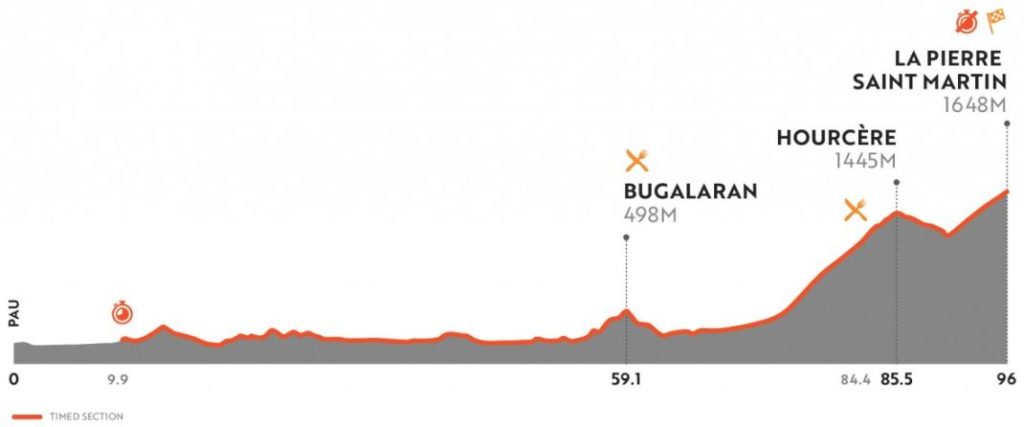
Description: A short stage to begin, with a summit finish. The first 10km were neutralised. Once the timing started, there were 45km of rolling hills and flat riding before the first of the three climbs, ending at La Pierre St Martin.
Strategy: Nearly everyone rides Stage 1 too hard. Mindful of this, but not wanting to fall too far behind, my goal was to be in the right group where the timing started so that I could ride fast but conservatively to the foot of the first climb. Once on the climb I planned to set my own pace, at 78-80% of my FTP, or mid Zone 3. I knew from experience that this should be sustainable.
What happened: The ride went more or less according to plan. In the last 2km before the timing started I worked my way up to around the 100th place. I had to work quite hard to stay with the group and my normalised power (NP) for the first 45km was 80% of my FTP (Zone 3). The first climb turned out to be highly irregular. I was keeping an eye on my average power, which was on target, but I saw later than my NP was high, at 87%, due to a significant number of over-threshold efforts on the steeper sections. I targeted the second and third climbs a little better (81% and 84%) and finished strongly.
Results: The ride took 4h15. I was 135th overall and 4th in my age category, 04:21 behind the 3rd placed rider. I spent 25 minutes (9%) in Zones 5 and 6, and my NP for the whole ride was 78% (Zone 3).
Summary: About right for Stage 1 of a 7-day event.
Stage 2
Pau to the Port de Balès (137km | 2900m+)
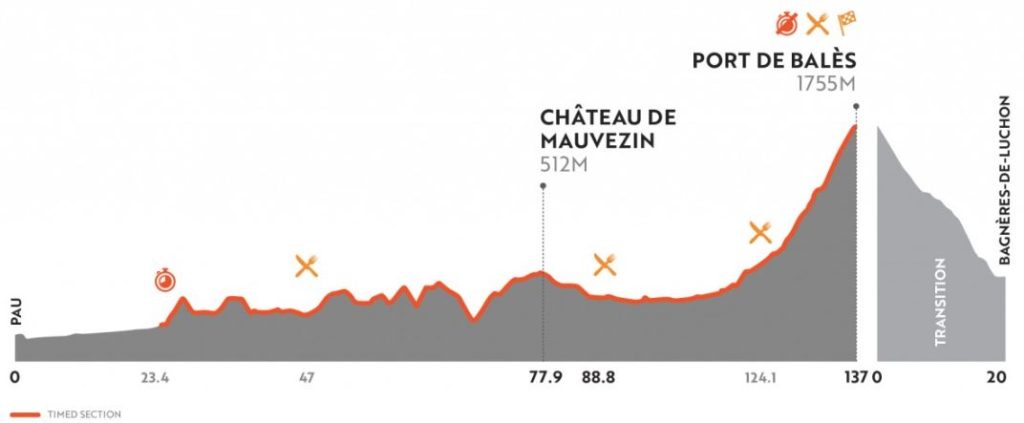
Description: The first 23km were neutralised. This meant a long, tedious convoy of almost one hour before the race began. We then had 100km of flat and rolling hills to ride before reaching the foot of the Port de Balès. Timing finished on the summit, and we were then to ride downhill to Bagnères de Luchon where the stage finished.
Strategy: My plan was essentially the same as for Stage 1, apart from the climb, which I intended to make at 75-77% FTP. My reasoning was that everyone would back off a little on the second day.
What happened: Once again I crossed the timing mat at around the 100th place. The next 3 hours were a succession of short, sharp climbs on roads varying from wide and straight to narrow, twisting and with poor surfaces. I had to make repeated hard efforts to stay with the group. My NP for the 3hrs was 78% FTP. A good measure of the difficulty of these first 120kms is that we accumulated over 1500m of climbing for a net gain of less than 300m.
Needless to say these efforts added to lingering fatigue from Stage 1 weighed heavily on me as I started up the 19km, 1157m+ climb to the Port de Balès. I have rarely struggled so much on a climb. My average power over the whole climb was 71%, but in the final 3km I was reduced to 65%. The climb took me 12 minutes more than in 2018, when it was on Stage 6. The question was, why?
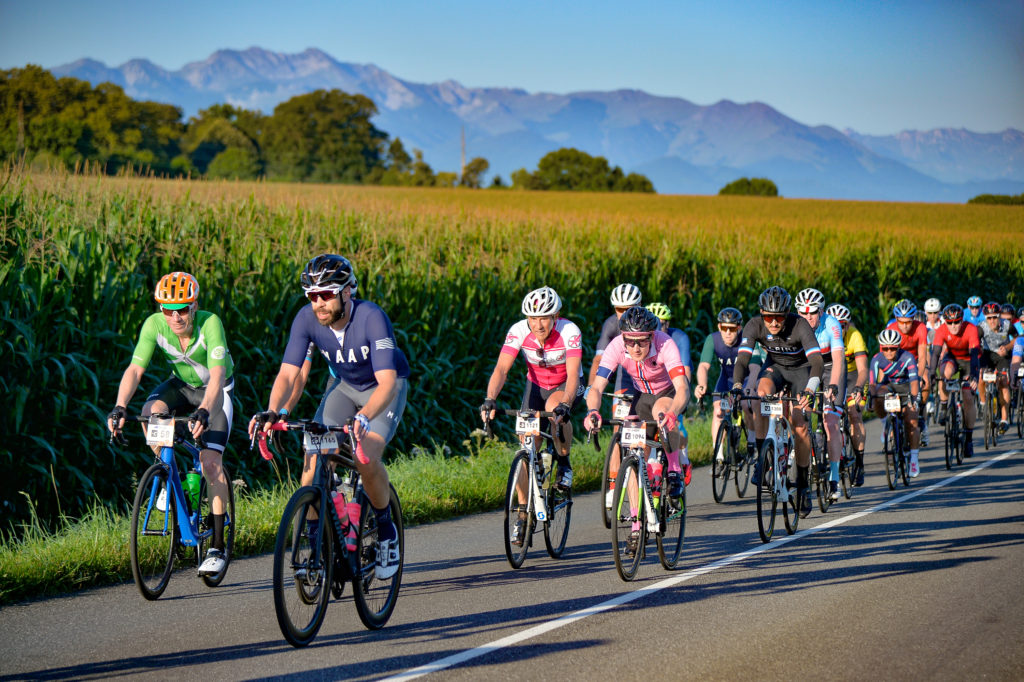
Results: The ride took 6h15 and I was placed 136th overall and 2nd in my age category. On GC I was still 4th, 03:02 behind the 3rd place. I spent 15 minutes (4%) in Zones 5 and 6 and my NP for the whole ride was 69% (Zone 2).
The final climb was the only climb of the entire week that I wasn’t able to do in Zone 3 or better, so accumulated fatigue can’t be the reason. The most likely explanation is low energy due to not eating and drinking enough. The best indicator for this is my heart rate, which was 12 beats higher than on any other climb. This suggests my heart had to work harder to get blood to the muscles, a sure sign of low blood sugar and/or thicker blood due to insufficient hydration.
Summary: Failing to eat and drink enough at the right times probably cost me 10-12 minutes.
Stage 3
Bagnères de Luchon to Hospices de France (131km | 3500m+)
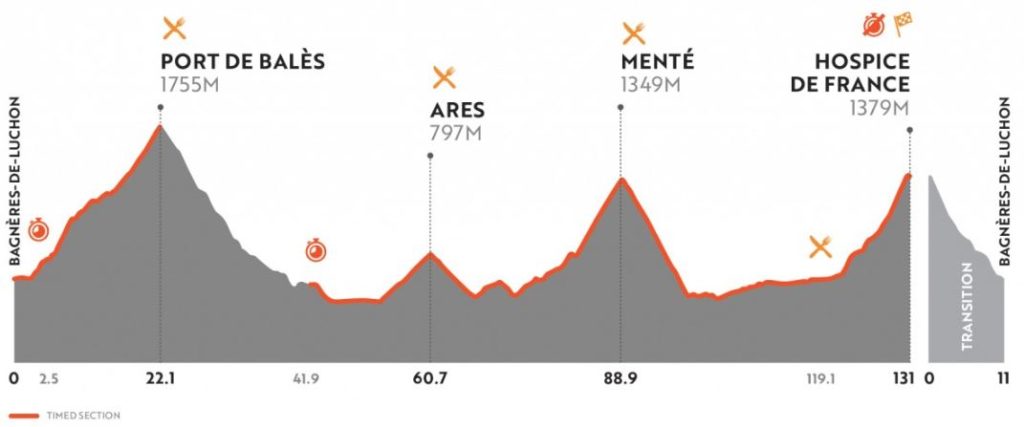
Description: The stage took us back over the Port de Balès (from the other side) after a very short neutralised zone. The descent was neutralised for 20km. After the timing restart the route continued to the col d’Ares and the col de Menté, followed by 20km back up the valley before the final climb to the Hospices de France.
Strategy: The forecast was for a cool, overcast day with a risk of rain. With three long climbs, one shorter one and relatively little flat, my plan today was to ride my own race, avoid any above-threshold efforts and make the climbs as steadily as possible. I was keen to avoid any repeat of my poor performance on yesterday’s final climb.
What happened: The weather was worse than expected, with fog and light drizzle up the first climb and then intermittently until the last climb, which was thankfully dry. Luckily I had exactly the right jacket (a light Gore-Tex waterproof). Some others rode the stage without appropriate clothing and seriously suffered on the descents. Twenty riders abandoned.
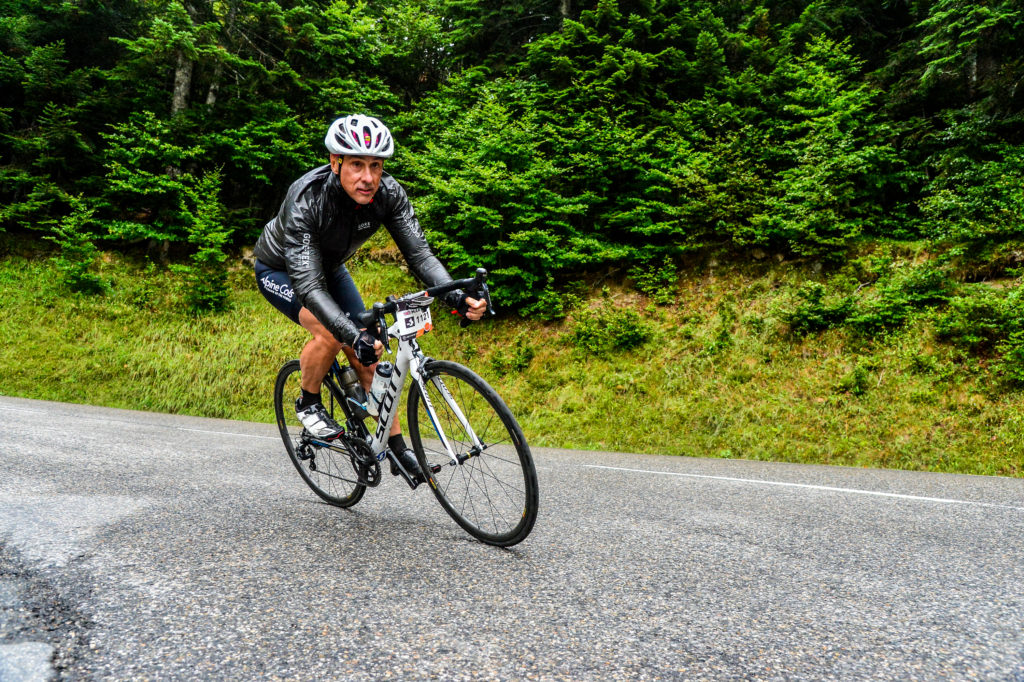
I climbed much better today, doing the Port de Balès steadily at 76% in 1h26, then the short col d’Ares at 83% in 25’ and the col de Menté at 82% in 50’. I did the ride up the valley at 71% in 42’ and the final, irregular climb to the Hospices de France at 83% in 52’. Throughout the stage, I was alone for long periods. I stopped for a total of 08:30 (including 4 minutes on the col de Menté, which was certainly too much).
Results: The ride took 6h35 and I finished 146th overall, 3rd in my age category. I spent barely 5 minutes in Zones 5 and 6 (1%) and my NP for the ride was 73% (Zone 2).
The good news was that I moved up to 3rd place on GC. I was nevertheless 11:17 behind the 2nd place rider, who was 06:20 faster than me on the day. Looking at the intermediate times he beat me by 3 mins up the Port de Balès and gained the rest before the final climb.
Summary: Lost time due to being too conservative on the first climb then stopping for too long and riding alone.
Stage 4
Bagnères de Luchon to col du Tourmalet (82km | 3250m+)
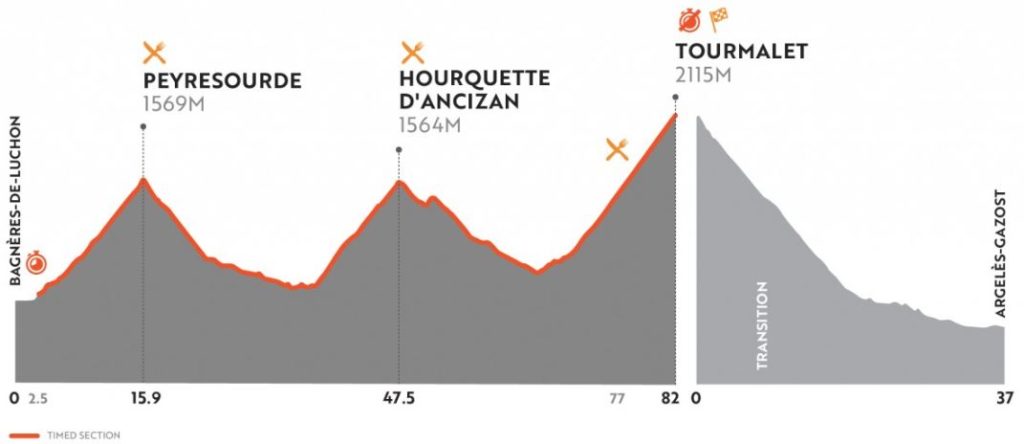
Description: This was to be the Queen stage, taking us over the col de Peyresourde, the Hourquette d’Ancizan and finishing on the col du Tourmalet. The three climbs follow each other in quick succession.
Strategy: After the better day yesterday, my plan was to make each of the climbs at 80-85% (mid-upper Zone 3), with no above-threshold efforts.
The weather was an important factor, cold and wet with continuous rain throughout the stage. All the descents were neutralised, reducing the stage to a series of hill climbs. Being properly equipped and willing to ride in these conditions makes all the difference.
What happened: I climbed the col de Peyresourde at 84% in 1h03, descended quickly – but prudently – in order to avoid getting too cold, and then warmed up again climbing the Hourquette d’Ancizan at 86% in 54’. Approaching Ste Marie de Campan and the turn to the Tourmalet, I was cold but looking forward to warming up on the 17km climb to come. It was not to be; the organisers stopped the race at this point due to low temperatures, rain and high winds on the summit and we were transferred to Argelès Gazost by bus. 60 riders either abandoned or did not start the stage.
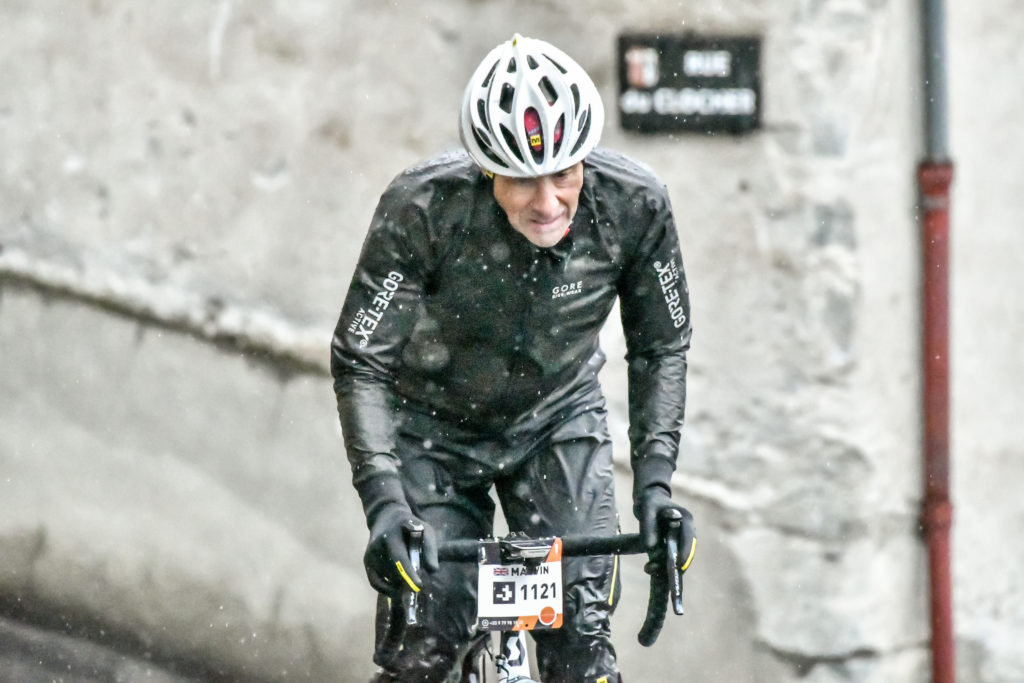
Results: The ride took 3h10 and I finished 99th overall, 2nd in my age category. On GC I was still in 3rd place, 09:37 behind the 2nd place. I gained 01:40 on the day. I spent less than 2 minutes in Zones 5 and 6 (<1%) and my NP for the stage was 76% (Zone 3).
Summary: A good ride. I believe I would have gained more time had we gone up the Tourmalet as expected.
Stage 5
ITT to the col de Spandelles (15km | 920m+)
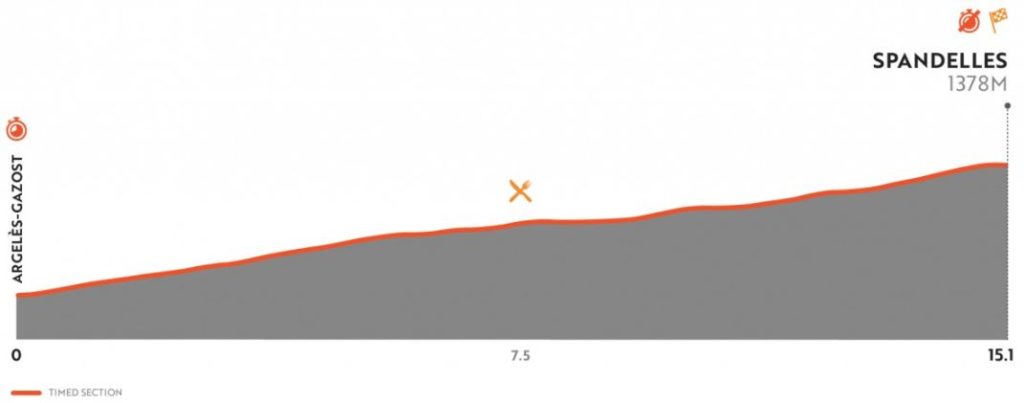
Description: The individual time trial at the Haute Route is always on the 4th or 5th day. Many riders treat it as an easy day; reasoning that the relatively small gains possible on a single climb are not worth the extra effort. Anyone wanting to do as well as possible, however, must ride it relatively hard. The trick is to judge how hard to go without compromising performance on the following day.
Strategy: I decided to target 90% FTP, starting a little below this and progressively accelerating to finish strong, while limiting over-threshold efforts to the minimum.
What happened: In fact I rode slightly harder than plan, averaging 94% for 1h, with the final 20’ at 95%. This was well into Zone 4.
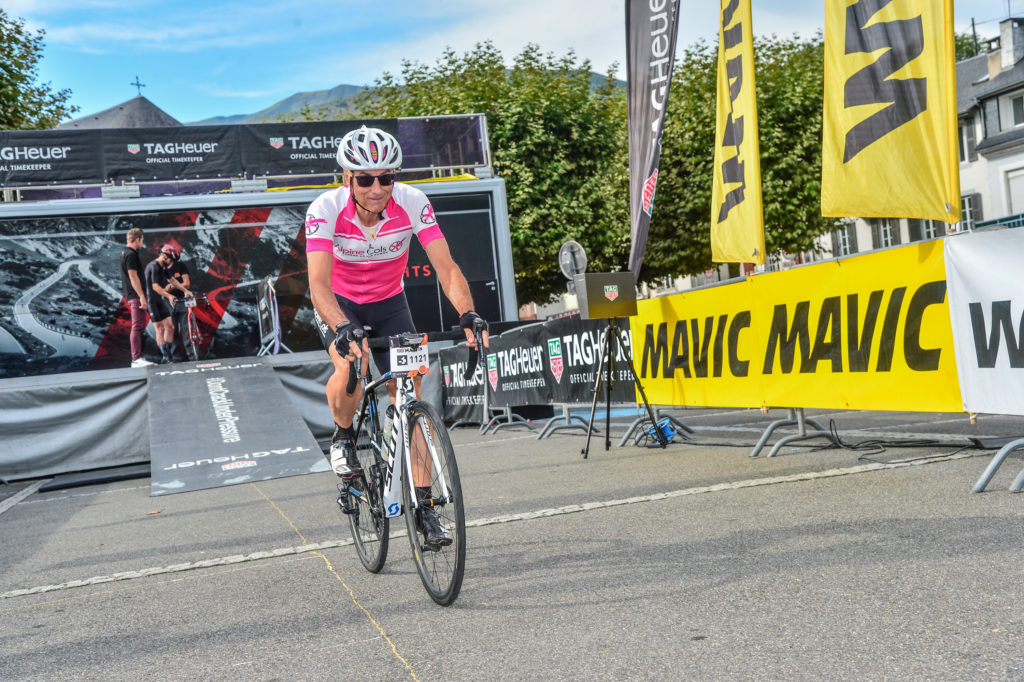
Results: Apparently many others rode even harder, because my place on the stage was in fact my worst yet at 162nd overall and 3rd in my age category. Time differences were small, however, with 16 riders finishing less than one minute in front of me and almost 100 riders less than five minutes in front of me. On GC I remained in 3rd place, 10:24 behind 2nd, losing a further 47 seconds.
I spent 9 minutes (7%) in Zones 5 and 6 and my NP for the climb was 94% (Zone 4).
Summary: A good ride, saving energy for Stage 6 without losing significant time. No regrets for not riding harder.
Stage 6
Argelès Gazost to Pau (131km | 2700m+)
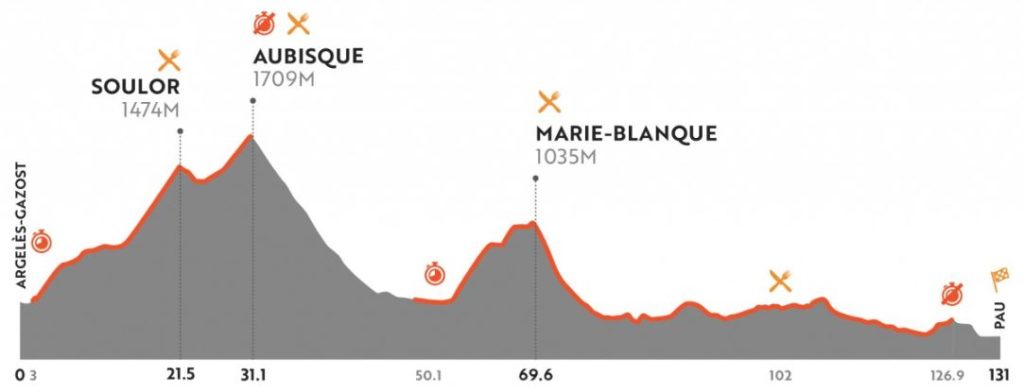
Description: This stage took us from the start straight up to the col du Soulor then on around the cirque du Litor to the col d’Aubisque where timing stopped for the neutralised descent. Timing restarted 19km further on, before the climb to the col de Marie-Blanque, and was then continuous to the finish, close to Pau. The last 50km of the route were flat and rolling hills.
Strategy: This was a critical day for me to try to make up time and move up the rankings. Standing 10 minutes behind my age-group rival, I had to do something drastic. The plan was to carry the least water possible (thus reducing unnecessary weight), ride the climbs at the limit, descend quickly to the feed station in the neutralised zone before the Marie-Blanque, wait for a group there and then stay with them till the end. I was betting that my rivals would make the climbs more conservatively and then lose significant time by being in a slower group for the last 50km.
What happened: I made sure I started near the front and then climbed the Soulor at 97%, in 1h01. I found myself with Chris and Paul (who normally finish well in front of me): so far so good! A short descent then across to the Aubisque, which I climbed at 93% in 23’. Timing stopped on the summit. I descended quickly to the next feed station, filled one bottle and set off as soon as a group formed. I climbed the Marie-Blanque with this group at 91% in 39’. Unfortunately the group carried on, while I was forced to stop to fill my water bottle. I couldn’t risk trying to ride to the finish without water. In spite of limiting my stop to less than 20 seconds, I now had a huge chase to make. This took me 5 minutes of heart-in-mouth descending followed by another 10 minutes of very hard chasing to finally get back on. I then managed to hang on and finish in the same group as Chris and Paul.
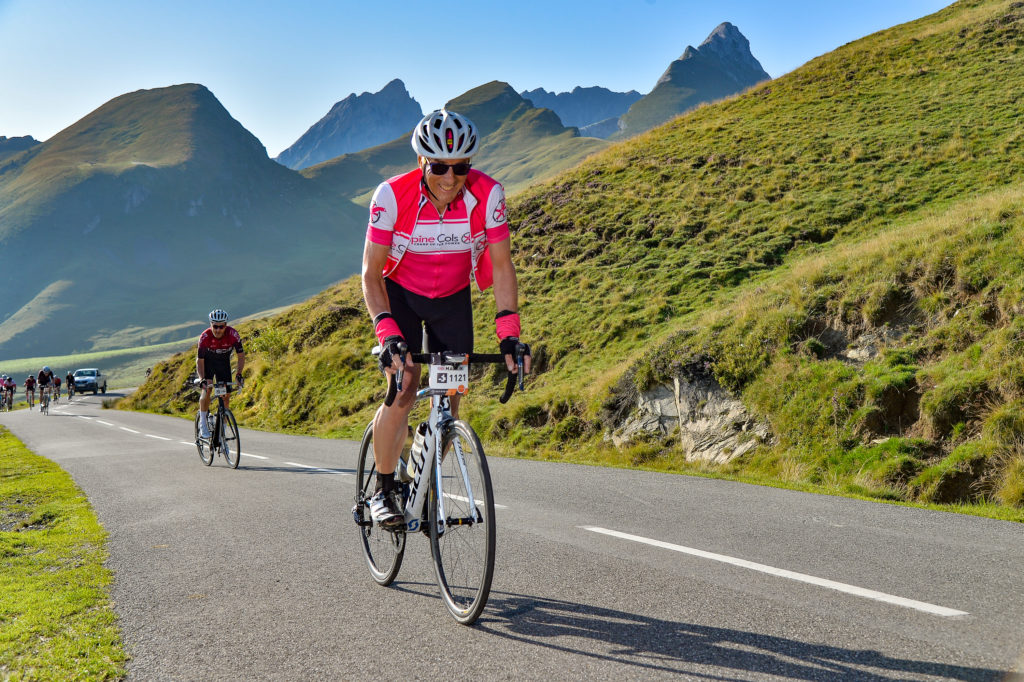
Analysing the ride file later showed that this was literally the hardest I had every ridden: 4h35 at an Intensity Factor (IF) of almost 0.9, with 26% of the ride in Zone 4 and 21% (58 minutes) in Zones 5 and 6. My NP for the ride was 86% (top of Zone 3).
Results: The strategy paid off even better than expected: I finished 58th on the stage, gained 10:47 on my rival in my age category and moved up to 2nd place on GC! My rival was now 23 seconds behind.
Summary: An outstanding ride. The gamble paid off. The only error was climbing the Marie-Blanque with one water bottle empty, forcing me to stop. The $64,000 question: would I be able to recover in time for Stage 7?
Stage 7
Pau to Pau (127km | 2300m+)
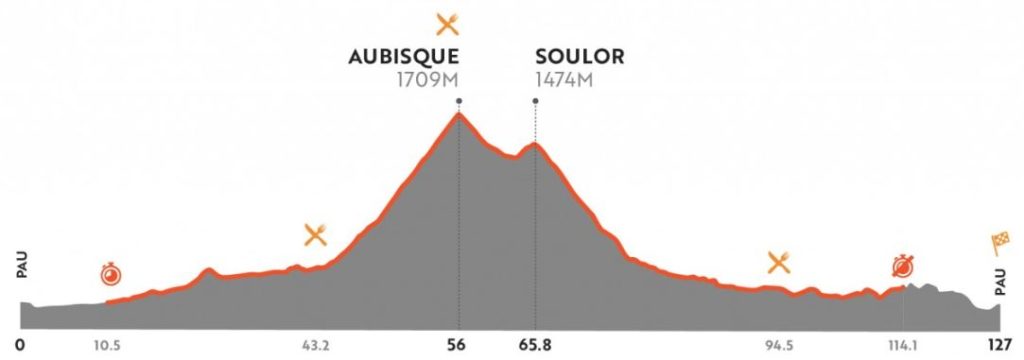
Description: Starting and finishing in Pau and going back over the Aubisque and the Soulor, this stage once again included significant portions of flat riding before and after the mountains. The first 10km were neutralised, as was the 7.5km descent from the Aubisque, again creating a disjointed race.
Strategy: The only sensible strategy for this final stage was to see what I had left and give it everything, keeping just enough in reserve on the major climb so that I wouldn’t be dropped on the descent and final 35km, which included a series of short, sharp leg-breaking hills to get over. The other key part of the strategy was to stick close to my rival (who I hadn’t actually seen all week).
What happened: Needless to say, and in spite of a one-hour massage, I hadn’t fully recovered from Stage 6. Luckily the leaders didn’t seem keen to make a race out of it on the way out to the Aubisque, so together with 80 or 90 other riders I was able to stay in touch with the lead group until the start of the climb. Things got tough from here on. I started off well enough at 92%, but could only hold this for the first half an hour. My power dropped to 86% for the last 20’ of the 1h17’ climb, and I put myself through some epic suffering even to hold that. I stopped in the neutralised zone for 5 minutes. This was longer than I intended, but I needed to recover. The climb to the Soulor only took 7 minutes but seemed interminable. I managed 86% on this. Once over the summit the only thing left was to ride home…
I was too tired to take any risks on the descent, but was able to join a group of six other riders which formed near the bottom. There were all younger and stronger than me but kindly allowed me to sit on during the 35km dash to the finish. This final hour was extremely tough with dozens of above-threshold efforts needed to stay with the group.
Overall, I spent 35 minutes in Zones 5 and 6, and the NP for the complete ride was 81% (Zone 3).
And my rival? I was keeping a close eye open for him (every rider at the Haute Route must wear a bib pinned to their jersey with their name and number, as well as the bike plate). Early on the Aubisque I was passed – with another rider between us – by someone clearly in one of the older age groups not wearing a bib. Was it him? I don’t know. Could I have held his wheel up the climb? I don’t know, but had I known for sure it was him I would at least have tried…
Results: The result was 107th on the stage and 3rd in my age group, and my final position on GC was 106th overall and 3rd in my age group. After gaining 10:47 on my rival on the 6th stage, I lost 02:49 to him on the last stage, finishing 02:26 behind him on GC. Looking at the intermediate times, he gained it all on the climb to the Aubisque.
Summary: Satisfaction for a good result, tempered by frustration that I could have been second in my category. The time was mostly lost on Stages 2 and 3. I couldn’t repeat the huge effort I made on Stage 6 to stay in front on the final stage.
Final thoughts
Doing well at the Haute Route depends above all on the quality of your preparation. Fail to prepare seriously in the months (and years…) prior to the event and you will not do well. Once at the event, however, you have to make the most of what you have. This means riding as close as possible to the limits of your capacity at all times while stopping as little as possible and avoiding errors.
I could have gained 2.5 minutes and finished in 2nd place in numerous ways. Amongst the more important:
- Better nutrition on Stage 2 (potential gain 10-12 minutes)
- Faster first climb on Stage 3 (potential gain 3 minutes)
- Less time stopped on Stage 3 (potential gain 2 minutes, more if I could have joined a group)
Some things to bear in mind:
- Pacing is crucial and especially the time spent above threshold, which is very costly in energy terms and takes time to recover from.
- Never ride alone. You can lose a lot of time by failing to ride in a group.
- Be aware as groups form at the feed stations and join them.
- Limit the stops, especially within the timed sections.
- Make sure you have proper all-weather clothing and are at ease riding in the rain.
- Pay careful attention to your nutrition and hydration. Aim at a minimum of 60g of carbs per hour and never fall behind.
- And finally… you are not a professional, don’t take it too seriously and make sure you have fun!
Alpine Cols
Between us, the Alpine Cols coaches have ridden over 30 Haute Route events. We have unparalleled experience in preparing and coaching riders to be at their best at these challenging events. Contact us for more information.
Great experience Marvin! Thank for sharing it. We chat last year ending stage 1 PY. Cheers!
Thanks Rodrigo!
Marvin, it was a wonderful trip down memory lane reading this! Thanks so much for taking the time to put it together. As a less experienced rider, I always kept an eye on you. Hope to see you at a future event when time and money allow.
Thank you Soulby for the comment: you didn’t do so badly yourself! Great effort!